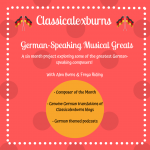Ludwig van Beethoven: The Creatures of Prometheus Overture
Context
The Creatures of Prometheus is a ballet composed in 1801 by Ludwig van Beethoven. The ballet premiered in March 1801 at the Burgtheater in Vienna, and received its US premiere in 1808. The ballet is the only one that Beethoven wrote. The ballet solidified Beethoven’s spot on the Viennese stage. Paired with its swift composition and immediate success in Europe, The Creatures of Prometheus suggested that Beethoven would write more for the stage.
A short synopsis from the premiere performance of the ballet reads:
“This allegorical ballet is based on the myth of Prometheus. The Greek philosophers, who knew him, elucidate the story in the following manner – they depict Prometheus as a lofty spirit who, finding the human beings of his time in a state of ignorance, refined them through the art and knowledge and gave them laws of right conduct.”
For the two-act ballet, Beethoven composed an overture, introduction, fifteen numbers and a finale.
The Music
After the dramatic opening chords that build the foundations for the slow introduction, the strings lead this opening section. Beethoven’s use of dissonance at the beginning is arresting and would have been quite shocking for the time.
After the opening slow theme the orchestra burst into a blaze of colour. Fizzing strings drive the force of the tempo as the winds sparkle with more intricate lines. The second theme, largely based on the fast theme, is still driving in tempo, although this time it is much quieter and more gentle in character.
The infectious energy heard throughout the overture is said to represent Prometheus fleeing from heaven after stealing fire from the Gods. The development section of the overture is very short, and could be easily missed. However, Beethoven’s orchestrations make sure we know it’s happening. The recapitulation, in return, is longer than normal, and sees the orchestra unite to perform a repeated loud section.
The extended coda section is still bristling with energy until the last bold chords played by the whole orchestra. The music never waivers in this overture, the tempo is always driving and the themes are always buzzing with energy and drive.
Final Thoughts
Beethoven also used some of the music from the overture in the finale over the ballet. His use of fast-moving strings adds excitement and drama to the music. From the bold and dissonant opening chords, Beethoven leaves you wondering what path the overture will take. Luckily for us, the overture is packed full of exciting twists and turns, making it an ideal ballet or concert opener.
Ⓒ Alex Burns
Happy Reading!
You might also enjoy… Wolfgang Amadeus Mozart: The Marriage of Figaro Overture
*This blog is part of the German Speaking Musical Greats Project 2019/20

Recommended Recordings:


0 Comments